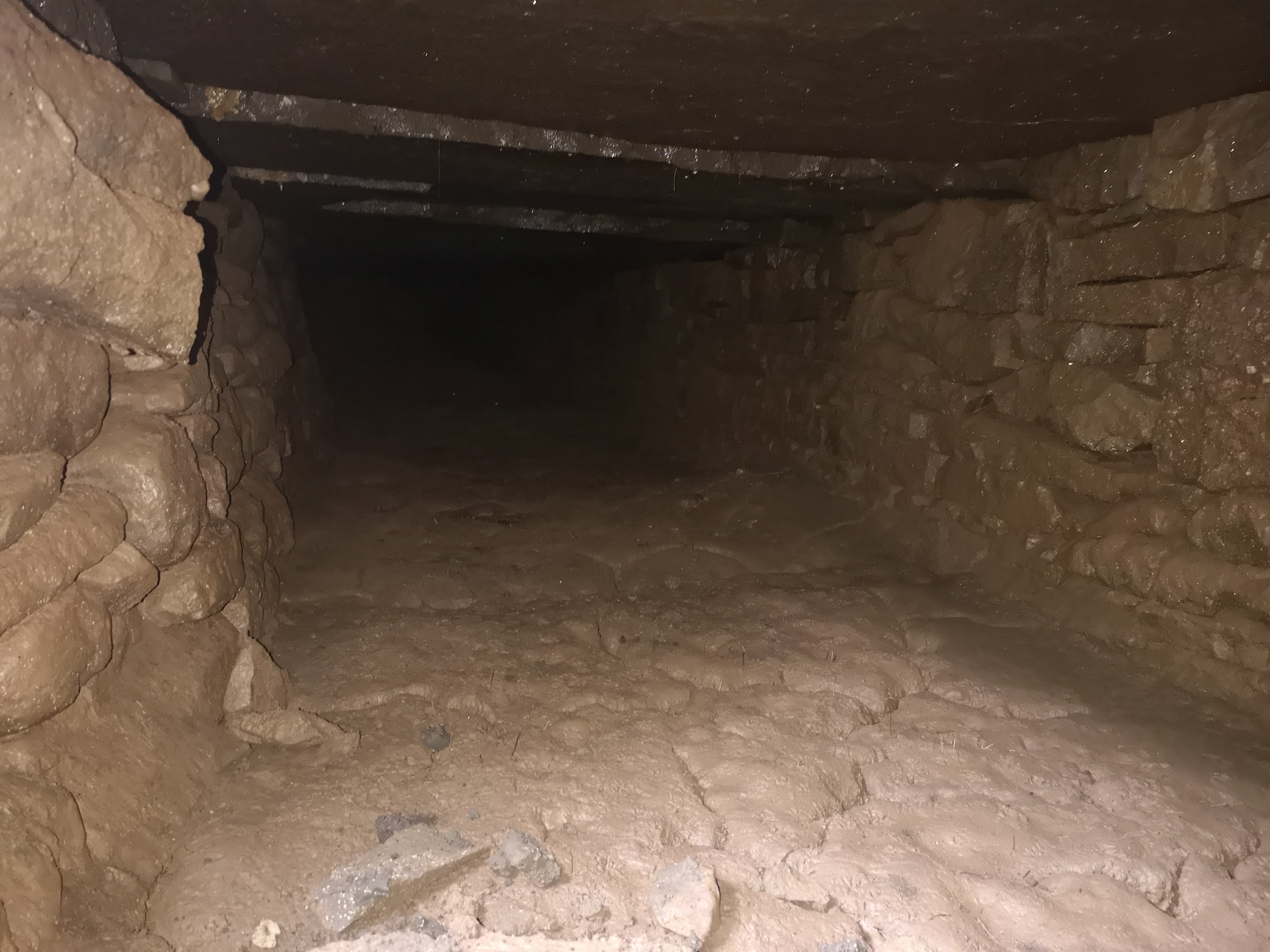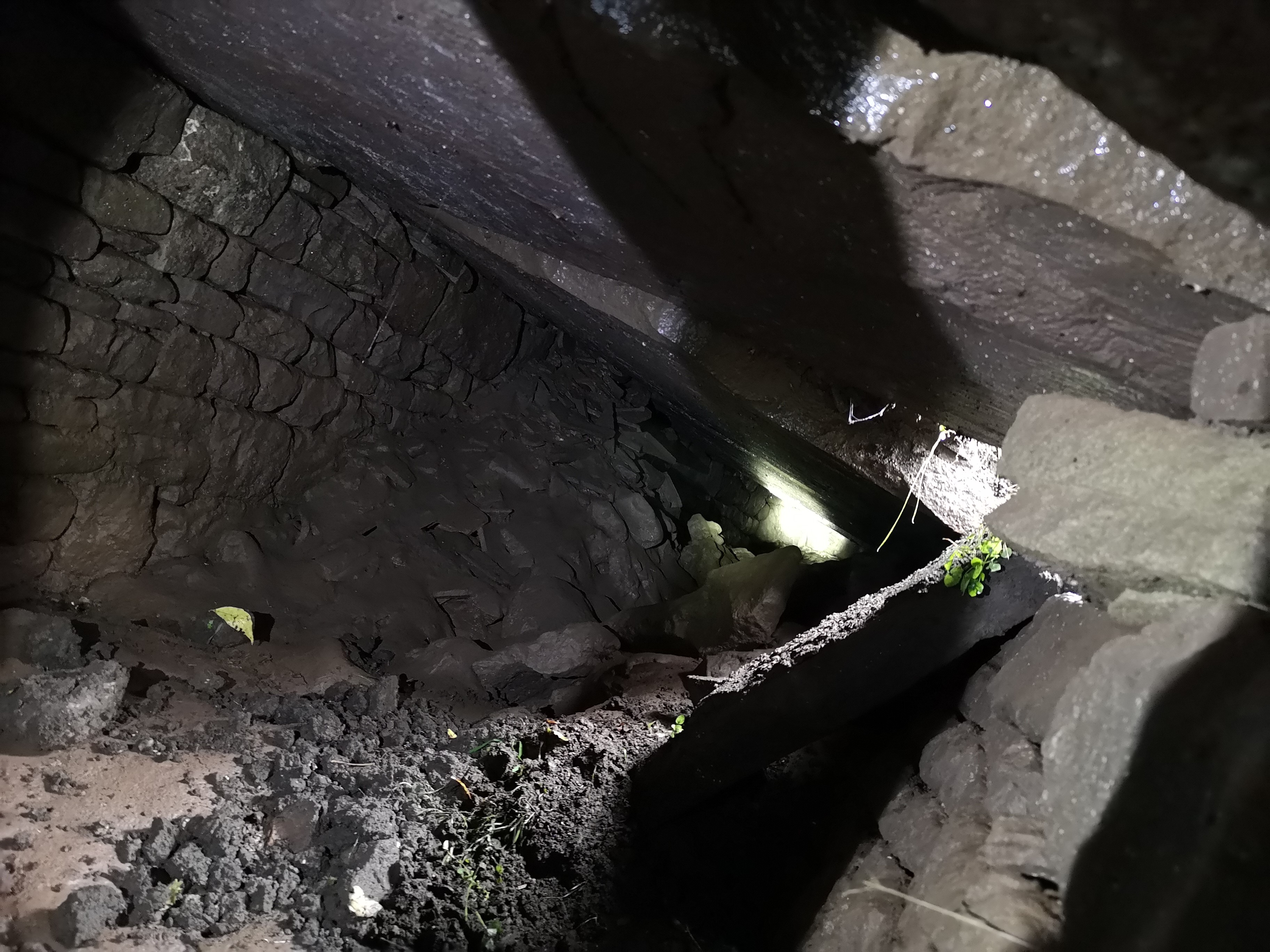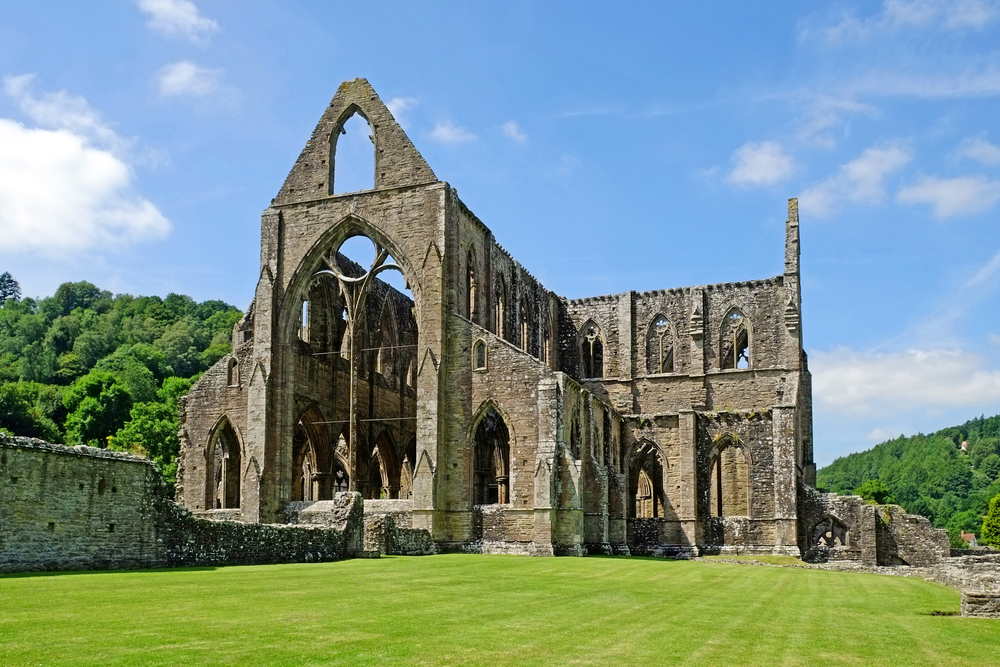Power technicians discover secret medieval tunnel under footpath in Wales
There is no record of the tunnel ever being built.

A secret medieval tunnel has been discovered near the site of a soaring 12th-century Abbey in Wales.
Electrical workers from Western Power Distribution (WPD) in Wales accidentally discovered the tunnels while digging a hole for a new powerline pole in a customer's backyard in Monmouthshire, near the English border.
The human-made tunnel system is 4 feet (1.2 meters) tall and is situated alongside a brook that runs through the village of Tintern and the Wye Valley. There is no record of the tunnels ever being built, and the archaeologists who have now examined them aren't sure what they were used for or how far they stretch underground.
Related: 12 bizarre medieval trends
"Shortly after the excavation work began, the digging team made the extraordinary discovery of what they initially thought to be a cave," Allyn Gore, a WPD technician who was involved in the discovery, said in a statement. "I have been involved in other excavations where we have discovered old wells and cellars not shown on any plans, but nothing as exciting and impressive as this."

The power company has now rerouted maintenance work away from the tunnels to allow for an archaeological investigation that could take years to complete, according to the WPD statement.
Unknown origins
The tunnels aren't shown on any maps of the area created by the ordnance survey — the national mapping agency of the U.K. — that date back to the 18th century, according to WPD.
Sign up for the Live Science daily newsletter now
Get the world’s most fascinating discoveries delivered straight to your inbox.
"Before work began, all the usual checks and permissions were in place," Gore said in the statement. "Nothing had shown up on any of our drawings or records to indicate there was anything unusual about the site."
The tunnels also run underneath a footpath in the village, so residents have been walking on top of tunnels for centuries without realizing it.
The tunnels could be linked to the nearby Tintern Abbey, which was built by Cistercian monks in 1131 and is considered a "national icon" of Wales and a "gothic masterpiece," according to Cadw (the Welsh Government's historic and cultural heritage service). The Abbey fell into ruin after King Henry VIII's dissolution of the monasteries in 1536, so if the tunnels were part of the Abbey this could explain why there are no surviving records of the tunnels. (Cadw is a Welsh word meaning "to protect.")

The brook that runs alongside the tunnels also runs past the ruins of several old furnaces and iron works in the Wye Valley, according to WPD, which suggests that the tunnels could have somehow played a role in the local metal working industry instead of being linked to the Abbey.
After consulting with Cadw scientists — who were "very impressed" and "quite fascinated" with the tunnels — a team of archaeologists plans to excavate the site, according to WPD.
Such work could reveal why the tunnels were built and their purpose.
Originally published on Live Science.

Harry is a U.K.-based senior staff writer at Live Science. He studied marine biology at the University of Exeter before training to become a journalist. He covers a wide range of topics including space exploration, planetary science, space weather, climate change, animal behavior and paleontology. His recent work on the solar maximum won "best space submission" at the 2024 Aerospace Media Awards and was shortlisted in the "top scoop" category at the NCTJ Awards for Excellence in 2023. He also writes Live Science's weekly Earth from space series.










